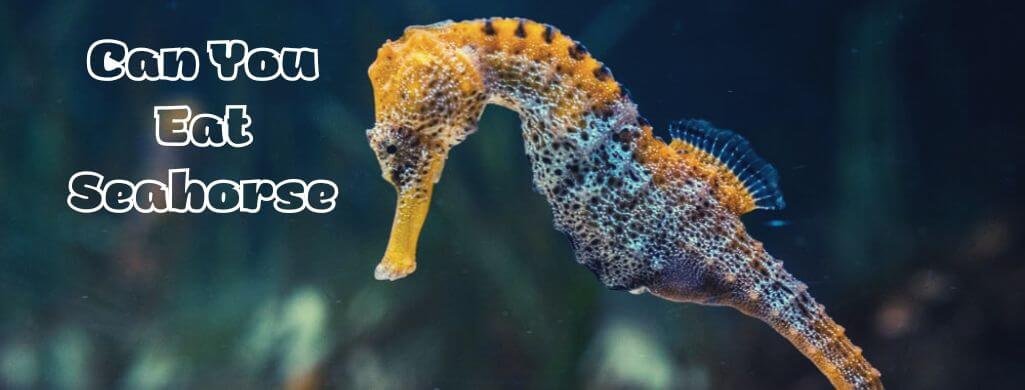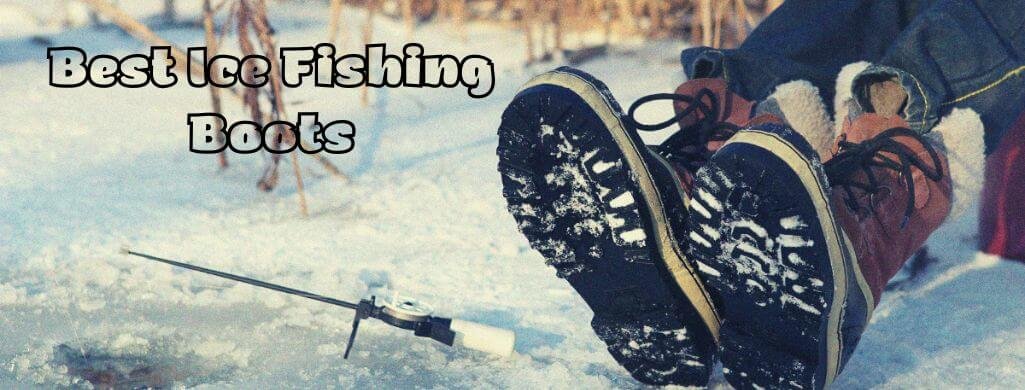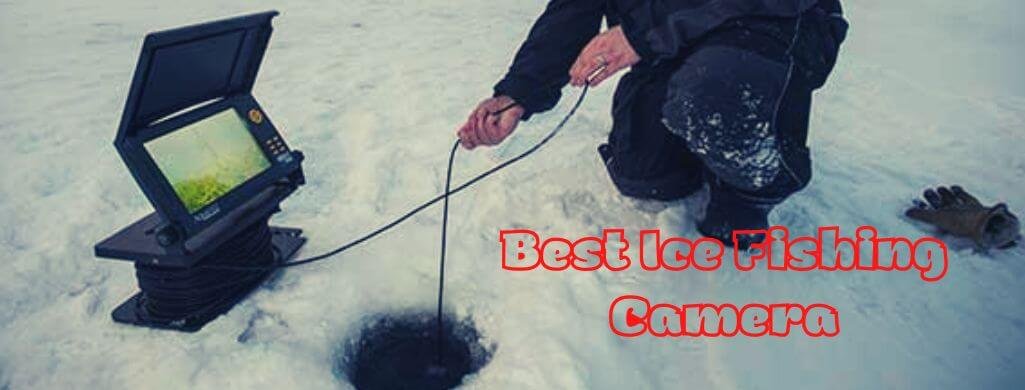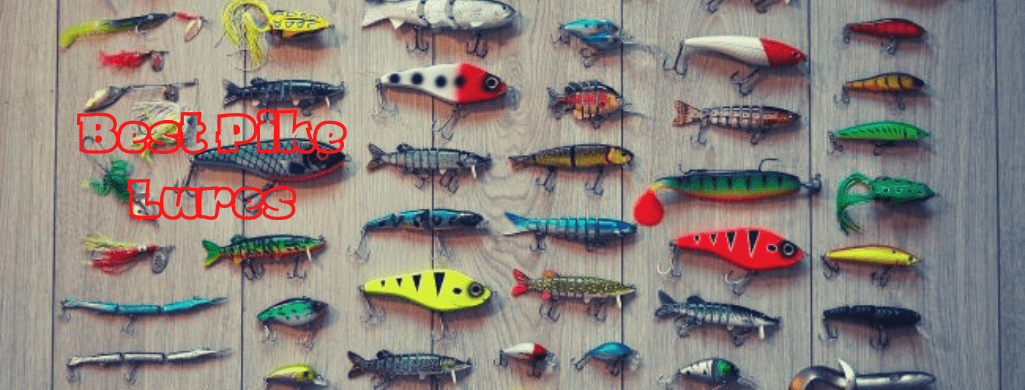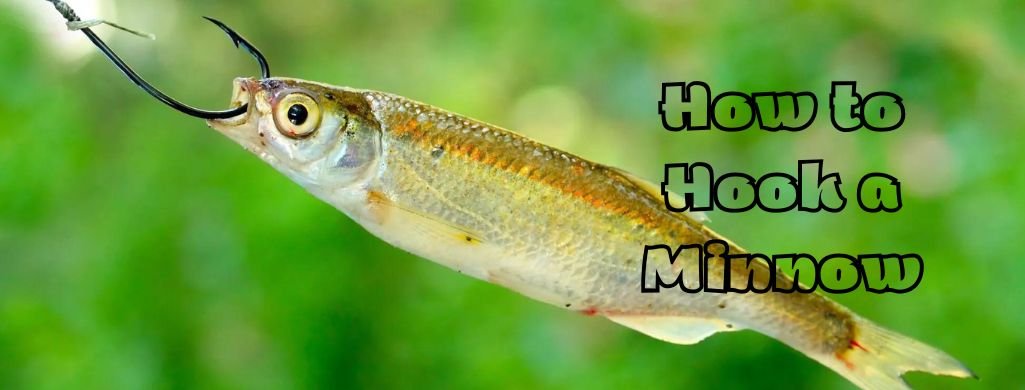
Do you love fishing but have trouble catching anything more than a nibble? If so, you’re not alone. Fishing can be a lot of fun, but it’s frustrating when you don’t catch anything.
In this blog post, we’re going to teach you how to hook a minnow like a pro! We’ll give you complete instructions on how to do it, and we’ll also provide some helpful tips that will increase your chances of success.
So what are you waiting for? Start reading and learn how to land the big one!
Table of Contents
What are Minnows?
Minnows are small freshwater fish that are commonly used as bait. They’re easy to catch and they’re a favorite food of much larger fish, which makes them ideal for use as bait.
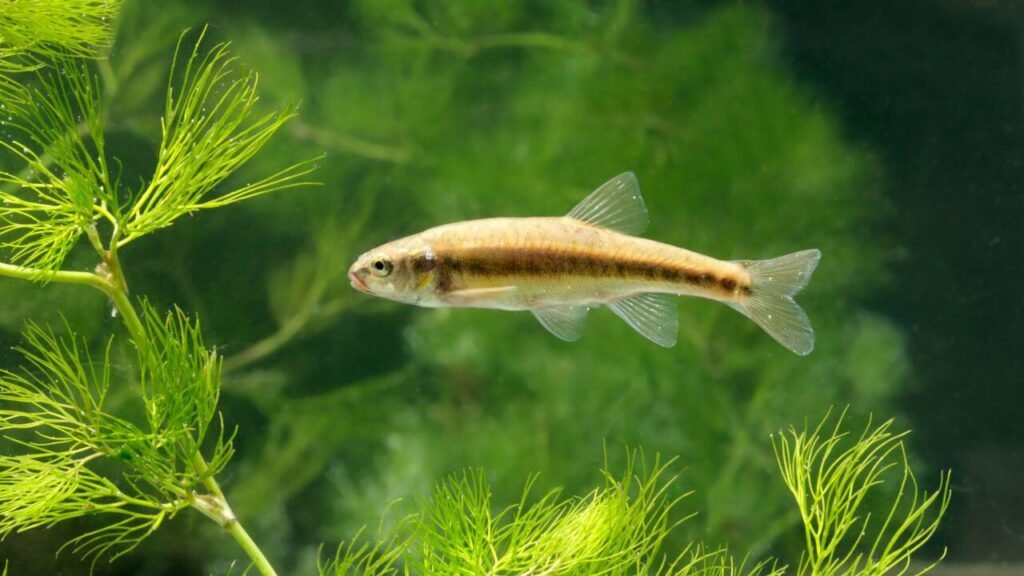
They are small in size, with most minnows only measuring a few inches long. The biggest minnow is the golden shiner which can grow up to 12 inches in length!
Minnows are an important food source for larger fish, reptiles, amphibians, and birds. They are also popular among humans as baitfish.
Minnows are not just one species of fish; rather, they are a group of several different species that share similar characteristics.
Minnows are an important part of the ecosystem as they provide food for larger predators such as bass, pike, and walleye. Commercial fishermen also value minnows as they are often used as live bait.
There are many different types of minnows, but the most common type used for fishing is the shiner. Shiners are small, silver-colored fish that have long, slender bodies. Many different types of minnow fish can be found in ponds, lakes, and streams all over the world.
Essential Tools in Hooking a Minnow
Fresh Bait
Obviously, the first thing you’ll need is some fresh bait. Minnows are a great choice because they’re easy to catch and they’re a favorite food of much larger fish. You can purchase minnows at most bait shops, or you can catch them yourself using a net or trap.
Hook
The next thing you’ll need is a hook. The type of hook you use will depend on the size of the minnow and the fish you’re trying to catch. For smaller minnows, a size 12 or 14 hook is typically best. For larger minnows, you may want to use a size 0-12/0 hook.
Line
You’ll also need some fishing line. The type of line you use is up to you, but we recommend using a monofilament or braided line for the best results.
Right Tackle
Now that you have all the necessary tools, it’s time to start fishing! The first step is to choose the right tackle for the job.
How to Hook a Minnow – Step by Step Guide
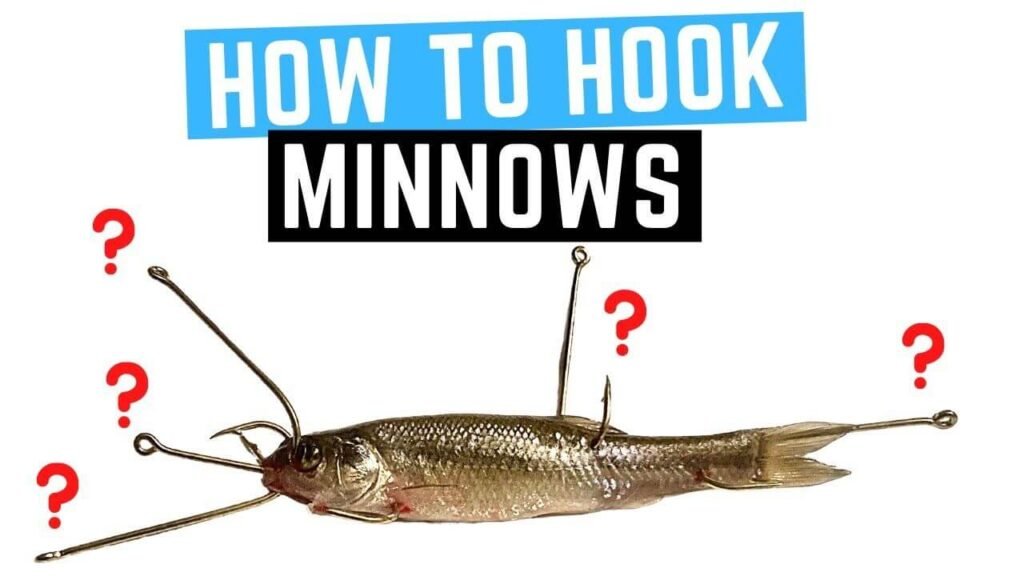
Step One: Wet your hands. This will prevent the minnow from slipping out of your grasp.
Step Two: Open the minnow’s mouth. To do this, place your thumb on one side of the minnow’s head and your forefinger on the other side. Then, push down with your thumb and pull up with your forefinger. The minnow’s mouth should open wide.
Step Three: Insert the hook. Once the minnow’s mouth is open, gently insert the hook into its mouth. Be careful not to puncture the minnow’s brain, which is located just behind the eyes.
Step Four: Close the minnow’s mouth. This will hold the hook in place and prevent it from falling out. To close the minnow’s mouth, simply reverse the process you used to open it.
Place your thumb on one side of the head and your forefinger on the other, then push up with your thumb and pull down with your forefinger.
Step Five: Let go of the minnow. The minnow is now ready to be used as bait. Simply cast it into the water and wait for a bite!
Mouth Hooking
One of the most popular methods for hooking baitfish is known as mouth hooking. As the name implies, mouth hooking involves threading the hook through the fish’s mouth and out through the center of its body.
This method has a number of advantages. First, it keeps the baitfish alive and healthy for longer, which can attract more fish.
Additionally, mouth-hooked baitfish tend to swim more naturally, making them more appealing to predators.
Finally, mouth hooking is relatively easy to do and doesn’t require any special tools or equipment. If you’re looking to improve your success on the water, give mouth hooking a try.
Mouth hooking is the most common method and it’s the one we recommend for most anglers.
Dorsal Back Hooking
One of the most popular options is the dorsal back hook. Also known as a minnow hook, this style of hook is designed to be used with live baitfish. To properly set the hook using this type of hook, simply insert the point of the hook into the back of the minnow’s head.
The barbed point will then penetrates the fish’s skull, ensuring a solid hold. Of course, this technique is only effective if you’re actually using live baitfish. If you’re using artificial lures, you’ll need to employ a different technique.
Trick Hooking
Another popular method is known as trick hooking. Trick hooking is a great way to use dead or dying baitfish, as it allows you to keep the bait on the hook without piercing its brain.
To trick hook a minnow, simply insert the point of the hook into the minnow’s mouth and out through its side. The barbed point will then catch on the minnow’s side, holding it in place.
This method is especially effective when targeting larger fish, as the minnow will appear to be wounded and struggling – two things that big fish can’t resist.
Tail Hooking
Tail hooking is another popular method, especially among anglers who are targeting smaller fish. To tail hook, a minnow simply inserts the point of the hook into the base of the minnow’s tail. The barbed point will then penetrate the fish’s body, holding it in place.
One advantage of tail hooking is that it keeps the minnow’s body off of the hook, making it less likely to be eaten by smaller fish. Additionally, tail hooking allows the minnow to swim more naturally, making it more appealing to predators.
Lip hooking
Lip hooking is a popular method for catching fish, and it’s relatively easy to do.
The first step is to find a minnow. These small fish are often found near the shoreline or in shallow water.
Once you’ve found a minnow, simply place the bait on the hook and cast your line into the water. The minnow will swim away, dragging the hook behind it.
Eventually, the minnow will tire and the hook will catch on its lip, at which point you can reel in your prize. Just be sure to remove the hook carefully so as not to damage the fish. With a little practice, you’ll be lip-hooking like a pro in no time!
Snout hooking
One of the most popular methods is known as snout hooking. As the name suggests, this involves hooking the fish through the snout, typically using a small baitfish or minnow. While this may seem like a difficult feat, it is actually fairly simple to do once you know how.
The first step is to find a minnow that is small enough to fit through the fish’s snout. Next, thread the line through the minnow’s mouth and out through the gill slit.
Finally, simply insert the hook into the fish’s snout and reel in your catch! Snout hooking is a great way to land a big fish, and it’s sure to impress your friends next time you’re out on the lake.
Trick hooking
Trick hooking occurs when the fish manages to avoid being impaled by the hook, and it can be extremely frustrating for anglers. The good news is that there are a few things you can do to reduce the likelihood of this happening.
First, you’ll need a minnow. Live bait is always best, but if you’re using an artificial minnow, choose one that is small and realistic-looking.
Next, thread the minnow onto the hook so that the point of the hook protrudes from the minnow’s mouth. Be careful not to puncture the minnow’s belly.
Choosing the Right Hook
Now that you know how to hook a minnow, it’s time to choose the right hook. The type of fish you’re targeting will dictate the size and shape of the hook you’ll need.
For smaller fish, such as panfish, a small single hook is typically all you’ll need. If you’re targeting larger fish, such as bass or walleye, you’ll need a larger hook that can accommodate the size of the minnow.
You’ll also want to consider the type of water you’re fishing in. If you’re fishing in deep water, you’ll need a longer hook so that the minnow can swim freely. In shallower water, a shorter hook is typically best.
No matter what type of fish you’re targeting, there’s a hook that’s just right for the job. By following these simple tips, you’ll be sure to land your next big catch!
Different Types of Hooks for Minnows
The type of fish you’re targeting will dictate the size and shape of the hook you’ll need.
For smaller fish, such as panfish, a small single hook is typically all you’ll need. If you’re targeting larger fish, such as bass or walleye, you’ll need a larger hook that can accommodate the size of the minnow.
You’ll also want to consider the type of water you’re fishing in. If you’re fishing in deep water, you’ll need a longer hook so that the minnow can swim freely. In shallower water, a shorter hook is typically best.
The Round Shank Hooks
The first type of hook is the round shank hook. This type of hook is ideal for smaller fish, as it provides a good grip without being too large. The round shape also prevents the minnow from slipping off, making it a great choice for beginners.
To use this type of hook, simply thread the minnow onto the hook so that the point of the hook protrudes from the minnow’s mouth. Be careful not to puncture the minnow’s belly.
The J Hook
The second type of hook is the J hook. This type of hook is a good choice for larger fish, as it can accommodate a larger baitfish. The J shape also helps to keep the minnow in place, making it less likely to slip off.
To use this type of hook, thread the minnow onto the hook so that the point of the hook protrudes from the minnow’s mouth. Again, be careful not to puncture the minnow’s belly.
The Circle-Shanked Hooks
The third type of hook is the circle-shanked hook. This type of hook is ideal for deep-water fishing, as it allows the minnow to swim freely. The circle shape also makes it less likely for the fish to slip off.
To use this type of hook, thread the minnow onto the hook so that the point of the hook protrudes from the minnow’s mouth. As with the other hooks, be careful not to puncture the minnow’s belly.
The Square-Shanked Hooks
The fourth type of hook is the square-shanked hook. This type of hook is ideal for shallower water, as it doesn’t allow the minnow to swim too far. The square shape also helps to keep the minnow in place, making it less likely to slip off.
To use this type of hook, thread the minnow onto the hook so that the point of the hook protrudes from the minnow’s mouth. Once again, be careful not to puncture the minnow’s belly.
Spinnerbait Hooks
The fifth and final type of hook is the spinnerbait hook. This type of hook is designed for use with artificial lures, such as spinners. The spinner bait hook is a good choice for those who don’t want to use live bait.
To use this type of hook, simply thread the lure onto the hook. The point of the hook should protrude from the lure’s body.
Benefits of Using Minnow as Bait
Minnows are versatile bait that can be used to catch a variety of different fish. Here are just a few of the benefits of using minnows:
Easy Breading – Minnows are very easy to bread. All you need is some flour, eggs, and bread crumbs.
Size – Minnows come in a variety of sizes, so you can choose the right size for the fish you’re trying to catch.
Lifespan – Minnows have a long lifespan, so you can use them multiple times.
Availability – Minnows are widely available and can be caught with a simple bait trap.
Variety – There are many different types of minnows, so you’re sure to find one that’s just right for your needs.
Limitations of Using Minnows
While minnows have many benefits, there are also some limitations to using them as bait.
They’re Not Always Effective – Minnows may not always be effective in attracting fish. If the fish aren’t biting, you may need to try another type of bait.
They’re Perishable – Minnows are perishable, so you need to use them quickly after you catch them. Otherwise, they’ll start to rot and smell bad.
Difficult to Keep Alive – Minnows are also difficult to keep alive, so you need to have a good bait container and aerator. Otherwise, they’ll die quickly.
Difficult to Catch – Minnows can be difficult to catch, so you may need to use a trap or net.
Smaller Size – Minnows are often smaller than other types of bait, so they may not be as effective in attracting larger fish.
Check Legality – Finally, before you use minnows as bait, be sure to check the local fishing regulations. In some areas, it’s not legal to use live bait.
Take Care of Minnows During Fishing
Minnows are small fish, they need care. So, it can be very harmful to your fishing trip if not taken care of. Here are some simple minnows care tips on how to take good care of minnows during fishing trips:
Keep Cool Temperature – You should keep the minnows at a cool temperature, especially during summer. A good way to do this is to put ice in the minnow bucket.
Aerate – Minnows need oxygen to survive. So, you should aerate the water by using an air pump or bubbler.
Keep Water Clean – You should also keep the water clean by changing it frequently. Minnows produce a lot of waste and they can’t live in dirty water.
Keep Out of Sunlight – Minnows also need to be kept out of direct sunlight. They can get sunburned and die if exposed to sunlight for too long.
Keep Out of Reach of Predators – You should also keep the minnows out of reach of predators. If a bird or other animal gets into the minnow bucket, they’ll eat all the minnows.
Avoid Too Many Minnows in a Bucket – Finally, you should avoid putting too many minnows in a bucket. They need enough room to swim and if they’re crowded, they can’t breathe and will die.
Frequently Asked Questions
What’s the best way to keep minnows alive?
The best way to keep minnows alive is to use a bait container with an aerator. This will provide them with oxygen and keep them cool.
How long do minnows last?
Minnows have a long lifespan and can be used multiple times. However, they’re perishable and will start to rot if not used quickly.
What’s the best way to catch minnows?
The best way to catch minnows is with a bait trap. This will allow you to catch them without having to chase them around.
How many minnows should I put in a bucket?
You should avoid putting too many minnows in a bucket. They need room to swim and if they’re crowded, they can’t breathe and will die.
Is it possible to keep minnows in a saltwater aquarium?
Yes, it is possible to keep minnows in a saltwater aquarium. However, they’re not as common in saltwater aquariums because they can’t tolerate high levels of salt.
What’s the difference between minnows and baitfish?
Minnows are small freshwater fish that are often used as bait. Baitfish are any fish that are used as bait, including minnows.
Do you use a bobber with minnows?
Yes, you can use a bobber with minnows. Bobbers help keep the minnow near the surface of the water where fish are more likely to see it.
Should I use minnows with a lure?
You can use minnows with a lure, but they’re not necessary. Lures are designed to attract fish without the use of bait.
Conclusion
Hooking a minnow is an essential skill for any fisherman. By following the steps in this guide, you’ll be able to hook a minnow like a pro in no time!
Minnows are a popular type of bait because they’re easy to catch and can be used multiple times. However, they’re perishable and need to be kept alive in order to be effective.
To keep your minnows alive, it’s important to have a good bait bucket and aerator. You should also change the water regularly and avoid overcrowding the bucket. If you take care of your minnows, they’ll last a long time and be a great addition to your fishing trip.

